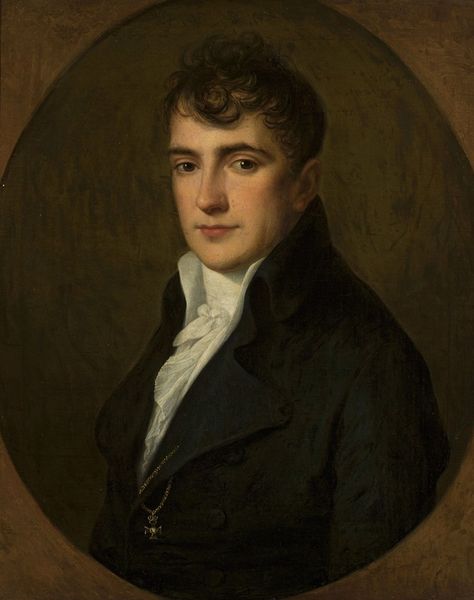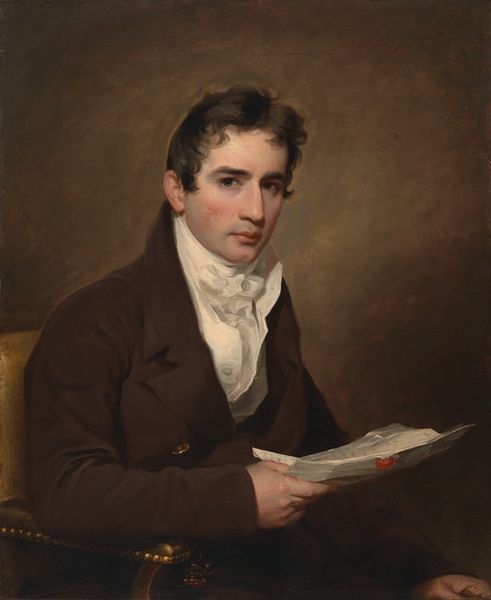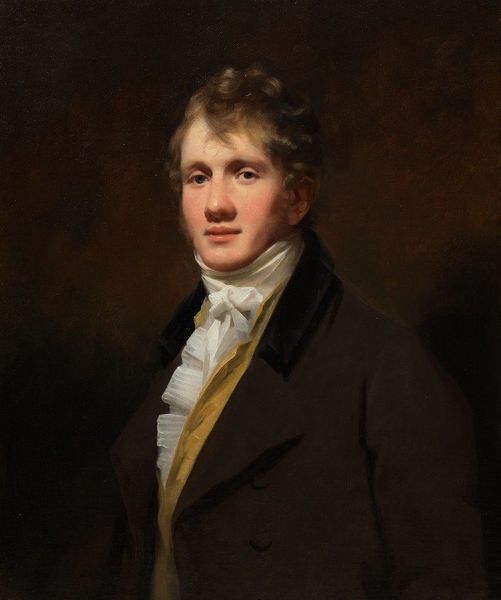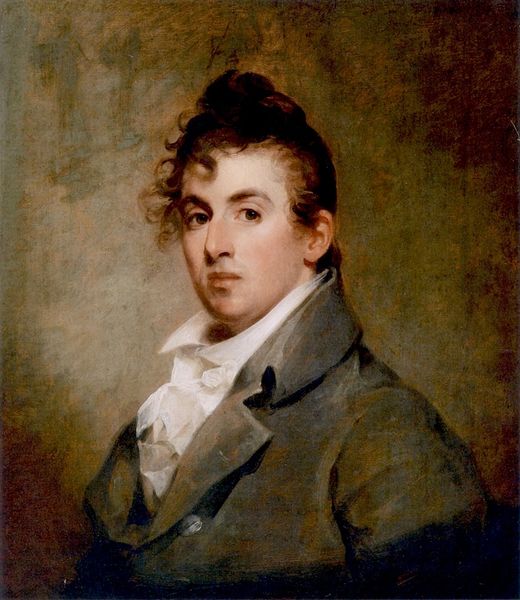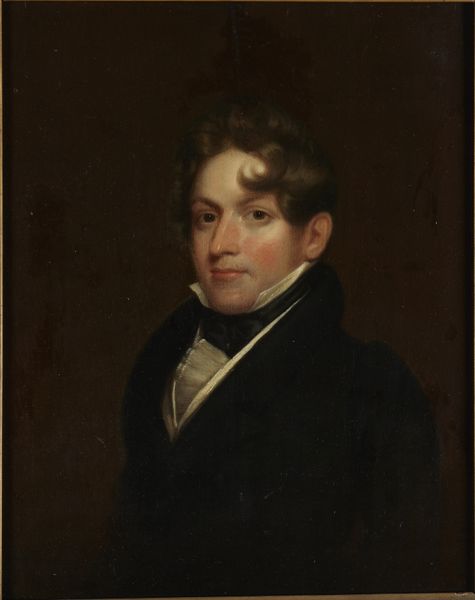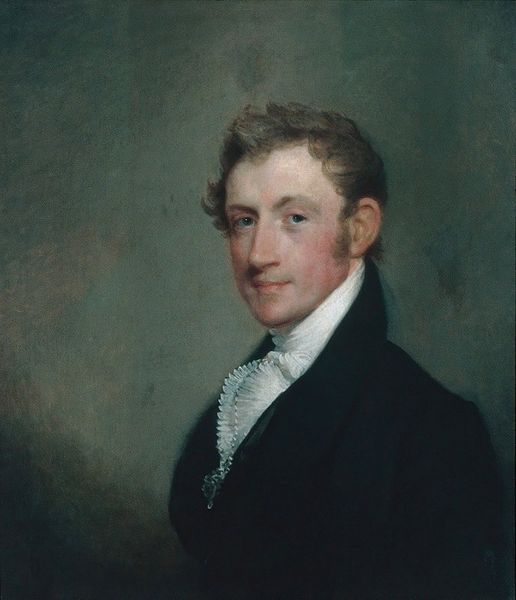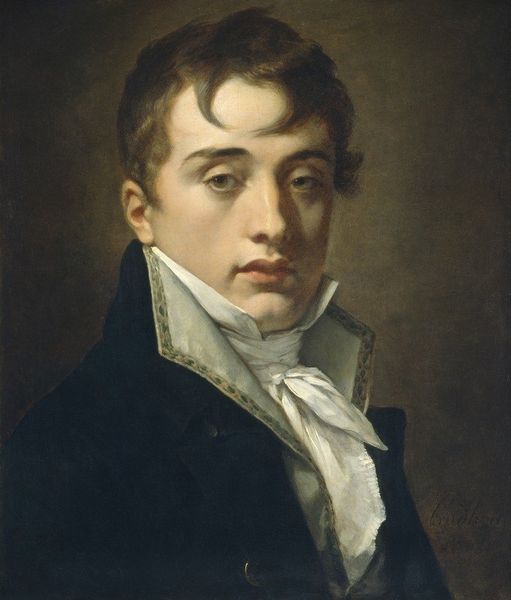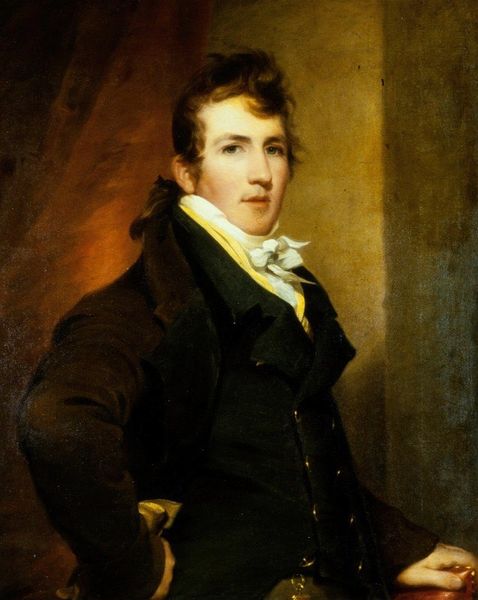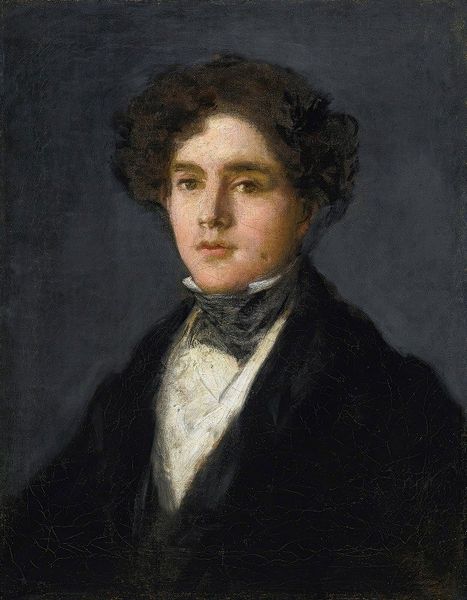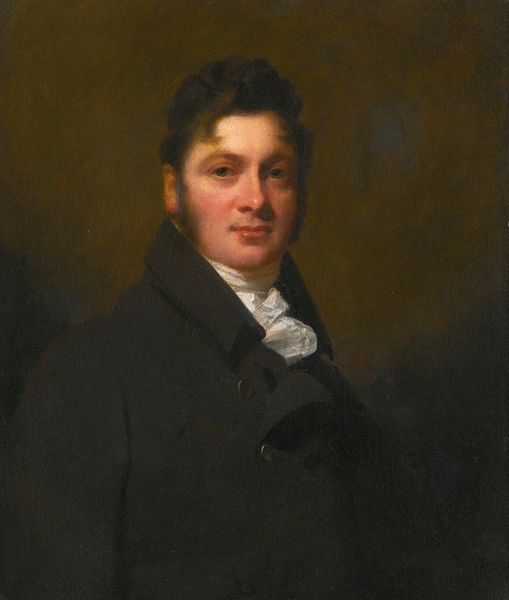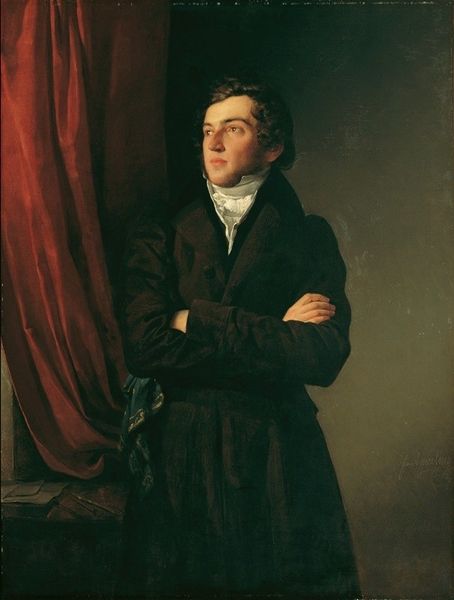
painting, oil-paint
#
portrait
#
figurative
#
portrait image
#
portrait
#
painting
#
oil-paint
#
portrait reference
#
portrait head and shoulder
#
romanticism
#
portrait drawing
#
facial portrait
#
academic-art
#
portrait art
#
fine art portrait
#
celebrity portrait
#
digital portrait
Copyright: Public Domain: Artvee
Editor: Standing before us, we have Thomas Sully's oil portrait of "George Mifflin Dallas," painted around 1810. I'm immediately struck by how the subject seems positioned between youthful innocence and the weight of future responsibilities, or so I read into it. What's your perspective on this piece? Curator: That’s a very perceptive initial reaction. Consider the early 19th century, the era of burgeoning American identity and political formation. Portraiture like this served a very specific social function. It wasn't just about capturing a likeness. How might this portrait contribute to Dallas’s image, to his positioning within a specific social and political landscape? Editor: I see what you mean. The slightly idealized features, the fashionable clothing... It’s definitely presenting him in a certain light. So, beyond the visual representation, this artwork has some say on its subject’s political image? Curator: Exactly. Think about the institutions that would have supported such commissions – prominent families, political circles. What kind of message are they trying to convey? Sully was highly sought after for portraits that communicated refinement and status. And consider that Dallas became Vice President later in his life. This early portrait perhaps laid the foundation of the expectations his peers, voters, and future supporters will have of him. How interesting is that? Editor: That completely shifts my understanding! So much more than just a painting; it’s a carefully constructed statement within a specific socio-political context. It seems I was thinking only skin-deep. Curator: Precisely. And thinking about it this way is essential in understanding any portrait of important figures! What was being projected to the public? Who commissioned it and why? Editor: It’s fascinating how knowing the historical context completely transforms how I view it. Thanks, I'm ready for the next one!
Comments
No comments
Be the first to comment and join the conversation on the ultimate creative platform.
